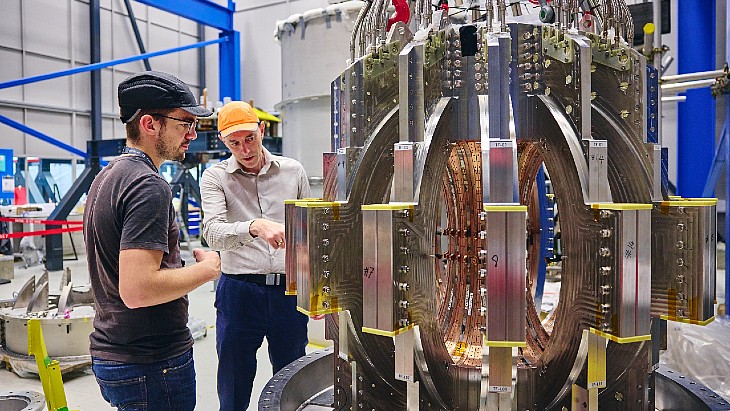HTS magnets are being used in Oxfordshire-based Tokamak Energy's Demo4 facility - 44 individual magnetic coils manufactured using 38 kilometres of HTS tape - which carries currents with zero electrical resistance and requires five times less cooling power than traditional superconducting materials. The HTS tapes are multi-layered conductors typically 12mm wide and less than 0.1 mm thick made mostly of strong and conductive metals, but with a crucial thin internal coating of rare earth barium copper oxide superconducting material.
The company - which aims to deploy commercial fusion power plants in the mid-2030s - requires strong magnetic fields to confine and control the plasma which is several times hotter than the centre of the Sun.
TE Magnetics, established as a wholly-owned subsidiary, aims to become the market leader in supplying HTS magnets to the fusion industry as well as focusing on new industrial deployment of the technology for things such as scientific research, medical diagnostics, renewable energy applications, energy storage and marine transportation systems, including for submarines, and magnetic levitation transport systems.
Tokamak Energy CEO Warrick Matthews said: "TE Magnetics will commercialise our transformative fusion magnet technology and take it into new markets. Launching this new business division allows us to focus on our core mission of delivering clean, secure and affordable fusion energy, while supporting our strategy for rapid growth across complementary markets."
TE Magnetics Director, Liam Brennan, said: "The era of high temperature superconductors is here. TE Magnetics ... is centred on opening new fields of performance in applications that will change the world in which we live today. We're taking our knowledge, skills and talent forward to disrupt existing and create new markets for magnet technologies over the next decade, including renewable energy, science, and land, water, air and space propulsion."
Tokamak Energy was spun out of the UK's Atomic Energy Authority (UKAEA) in 2009. It announced in February last year it is to build a prototype spherical tokamak, the ST80-HTS, at the UKAEA's Culham Campus, near Oxford, England, by 2026 "to demonstrate the full potential of high temperature superconducting magnets" and to inform the design of its fusion pilot plant, ST-E1, which is slated to demonstrate the capability to deliver electricity - producing up to 200 MW of net electrical power - in the early 2030s. That would then be followed by the roll-out of 500 MW commercial fusion plants "in the mid-2030s".






_63865.jpg)
_18570.jpg)
_16159.jpg)





